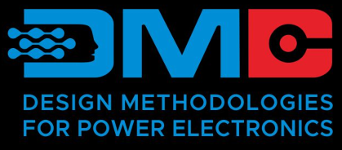Keynote Abstract
What is open source technology? Is it safe to use? Can open source really boost innovation and create business value? Is there any liability associated with using open source software? How does one get started using open source technology? These are excellent questions to ask before jumping into using open source technology.
Open source can be software (and/or technology) solutions that are free and can be easily accessed through online communities. Where is the catch? There really isn’t any. The technology for the most part is very stable and easy to use. If you need more help than is provided in the accompanying documentation, usually the organization that created the OpenSource solution will also provide maintenance and support. Wait! If something is free, won’t it be subpar? Nope. That is not what I have found.
I have found that open source solutions are generally very well written and safe to use. An open source company won’t last long if it gives away software and solutions that aren’t easy to use and/or don’t work. So how do these companies make money? Some companies make their money through providing paid maintenance and support. Other companies plan that their open source solution is so successful, and unique, that a larger enterprise will buy them out. Ok, so open source is free and generally well written. But why would I even consider using open source?
As a Data Scientist I want options that will drive my creativity. I don’t want to be ‘boxed’ into a solution that is dependent on the specific platform that my employer purchased for the entire organization. Larger enterprise platforms generally force you to use their pre-baked solutions. Let’s face it, one solution will not work for everything. I look for, and want the freedom to try different software solutions (algorithms) that best fit the specific problem I’m trying to solve. Also in trying different solutions I can be more creative and innovative. I’ve often found that using OpenSource triggers different approaches to a problem that I would not have considered. And at the end of the day a solution that can be put together easily and is shareable and reproducible will save your corporation time and cost.
Besides having options that drive my creativity, open source can easily fix common issues that are faced by scientists and engineers developing solutions and/or applications. Some of the most common issues, I have seen, are the following:
- Not having a common, interactive and re-usable environment that everyone on a team can use. Wait I’m developing in Spyder, why are you using Anaconda?
- Trouble having team members use the same code version and associated libraries & packages. Wait you are using Python ver 3.1? I’m using 3.7!
- Inability to access one or more data sources.
- Trouble having team members save their work to a common & shareable location. No a LAN drive and/or your laptop is not a good place to store your work!
- And without a common & shareable location to store your work you won’t have the ability to easily deploy, maintain or reproduce a solution you would like to put into production.
Being able to fix common issues, faced by scientists and engineers, and trying to develop and deploy reproducible applications and/or solutions is great. But isn’t there legal risk (liability) involved in using an open source solution? No. Just like any other technology you purchase, no one is going to give you a 100% guarantee that if you use their technology your solution will be solved. But, if you do have trepidation, that is why it is advisable to work with an enterprise software company with an open source business model, such as Red Hat.
Are you interested and ready to give open source a try? Join me in a discussion on Going open source – How it can boost innovation and create business value!
Speaker: Audrey D Reznik
Audrey Reznik is a Sr. Principal Software Engineer in the Red Hat Cloud Services – OpenShift Data Science team focusing on managed services, AI/ML workloads and next-generation platforms. She has been working in the IT Industry for over 20 years in full stack development to data science roles.
As a former technical advisor and data scientist Audrey has been instrumental in educating data scientists and developers about what the OpenShift platform is and how to use OpenShift containers (images) to organize, develop, train and deploy intelligent applications. She is passionate about Data Science and in particular the current opportunities with ML and Open Source technologies.

Sr. Principal Software Engineer, Red Hat
Speaker: Andrew Block
Andrew Block is a Distinguished Architect at Red Hat that works with organizations to design and implement solutions leveraging cloud native technologies. He specializes in Continuous Integration and Continuous Delivery methodologies, automation, and security to deliver solutions regardless of their operating environment.
Andrew is the author of several publications in the cloud native space that builds upon his passion for security, automation, and repeatability. As an Open Source advocate, he is a maintainer of the Helm project, a package manager for Kubernetes, and a contributor to several Open Source projects including sigstore which provides tooling for securing the software delivery process.

